|
Sleep is essential for recovery and can be just as important as getting in hard workouts. I know it is tough to prioritize sleep, especially with the demands of balancing work, family, and social life, but my goal is to give you some information to help you maximize your sleep quality. Most of the information from this post will come from the book "Power Sleep" by Dr. James Maas. Dr. Maas, creator of the term 'power nap', was a professor of mine at Cornell. His class was so popular that it had about 2,000 students each semester and was held in Cornell's largest concert hall. After participating in one of his research studies my freshman year, I was convinced to give sleep a higher priority. At the time, I had been struggling to balance my course load with training and traveling to meets. Shifting my focus to sleep significantly improved my athletic performance, as well as other aspects of my life. I still treat sleep as an crucial part of my training today.
REM Sleep for Skills & Visualization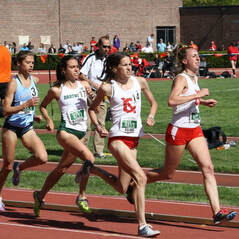 Rapid eye movement (REM) sleep is another essential stage for runners. During this stage of sleep, rapid firing of random neuronal pathways occurs. These pathways hold information that was learned that day and studies have shown that those who spend the most time in REM sleep are the best at grasping new skills. For runners, skills solidified during REM sleep can include drills, mental preparation, and even tactics learned from racing. I definitely spent a lot of time visualizing this race from the 2013 Heptagonal Championships. Visualizing a race is a form of practice and sleeping on those visualizations helped me execute my race as planned. During REM sleep, neurotransmitters are also replenished, giving one the mental energy to go out and run. Are you getting enough sleep? Most of us are so habituated to lower levels of alertness that we don't remember what it is like to feel wide awake and able to perform at an optimal level. If you want to assess your own level of alertness, you can take the Multiple Sleep Latency test online. In the meantime, some common indicators of sleep deprivation include: •falling asleep as soon as you get into bed (it should take about 20 minutes) •feeling sleepy during non-stimulating activities (driving, listening to a boring meeting, or watching TV) •needing an alarm clock to wake up in the morning •struggling to get out of bed in the morning •sleeping more on the weekends •falling asleep in your college team locker room 😂 Thank you to my former teammate who allowed the use of this great photo Establish a Regular Sleep Schedule Going to bed at the same time every night and rising at the same time every morning is essential for getting into a good sleep routine. Being consistent with the hours you spend in bed will allow these hours to synchronize with the sleepy phase of your biological clock. It is tempting to make up for sleep on the weekends, but according to Dr. Maas, "You cannot make up for sleep losses during the week by sleeping in on weekends anymore than you can make up for lack of regular exercise and overeating during the week by working out and dieting only on the weekends." Altering your sleep during the weekend will only throw off your biological clock more, making it harder to get adequate sleep during the week. And yes, this is a photo of my dad and I, circa 1991, when I was probably really messing with his biological clock 😈
1 Comment
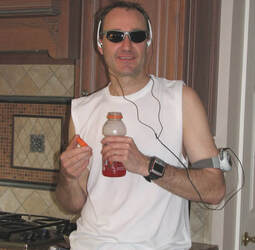 As I'm sure you all have noticed, the temperatures have been climbing over the last few weeks. While with the warmer weather can be invigorating, it can also make running more challenging. Over the next couple of days, I'll talk about what happens to your body when exercising in hot and humid conditions, some tips to make summer training a little easier, and ways to adjust your paces based off of the conditions. Why is running in the heat so hard?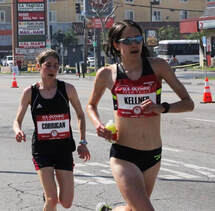 A hot day at the 2016 Olympic Marathon Trials A hot day at the 2016 Olympic Marathon Trials It is obvious by the splits on our watch and the excessive sweat on our shirts that we strain more when running in the heat, but why is this so? When one's temperature rises to an uncomfortable level, the body has two methods to try to cool itself. First, blood, which carries heat, is redirected to the surface of the skin. This allows the blood to dissipate that heat to the surroundings. While this has a cooling effect, it also means that less blood is flowing to the working muscles, so these organs get less oxygen. Thus, the same workload will require more energy than running in cooler temperatures. Second, the body tries to cool Itself by sweating. When sweat evaporates from the skin, it has a cooling effect. Unfortunately, high humidity, which indicates high moisture in the air, makes evaporation more difficult and sweating less efficient as a cooling mechanism. Can I get fitter by running in the heat?Heat acclimatization is it true phenomenon! In fact, heat training has been called the "poor man's altitude training". Both heat training and altitude training have similar effects on the body. When one goes up to altitude, there is less oxygen in the air. Therefore, the blood carries less oxygen to the working muscles. Over time, the body increases its blood volume so that it can transport more oxygen at one time. Similarly, with heat training, blood is redirected to the surface of the skin to facilitate cooling. In this process, less blood is able to carry oxygen to the muscles. To adapt to the heat, the body increases its volume of blood so it can bring more oxygen to the muscles. Therefore, both altitude training and heat training increase blood volume to facilitate oxygen transport. Different types of training, but similar results! How do I adjust my paces in warmer conditions?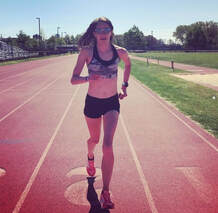 I get a lot of questions about whether or not it is appropriate to adjust training paces on hot days and if so, how to do this properly. It isn't as straightforward as it sounds, since temperature, humidity, and amount of sun all play into the equation. Truthfully, my favorite method is to go by effort rather than pace. Since you all have been practicing sticking to your goal paces during workouts (right!?!) you should have a sense of what each type of run should feel like effort-wise. However, I know many runners are "numbers people" and having a specific formula can help see if you are on the right track. My favorite formula comes from coach Mark Hadley of Maximum Running Performance. He suggests calculating the number of degrees above 60 it is outside. Let's say it is 83 degrees, so that would be 23. Then, add 5 to 10 degrees if it is humid out. We will add 7 for a decently humid day and make our new total 30. Multiply this number by 0.15% which is 4.5%. Therefore, we would increase our pace by 4.5% given these conditions. For example, 8:00 would become 8:22 pace. How do I prepare for a hot race?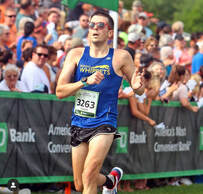 Perhaps you are preparing for a race where you know it is going to be hotter than it is now. The race maybe later in the summer or in a location with a much warmer climate than where you live. In order to perform your best, you should aim to begin the heat acclimation process during your training. This can be done by running in extra clothing, spending some time in a sauna (sometimes I just use my hot car, haha, but there's no science backing that) or running at the warmest time of day. In 2016, I prepared for the Olympic Marathon Trials by running in long sleeves and tights in Florida. Race day ended up being unseasonably warm and heat training paid off big time. Only use these methods if it is not already warm where you live. You shouldn't further stress your body when it is already very hot out! Tips for training in the heat:1. Stay hydratedStaying hydrated is the best way to beat the heat. The more hydrated one is, the more they can sweat. I recommend carrying a water bottle around with you throughout the day. Having water near you increases the likelihood of drinking at moments you otherwise would not have. One test to see if you are hydrated enough is to look at your urine. If you are drinking enough, it should be close to clear! I usually only drink water to hydrate throughout the day/pre-run and focus on getting in the electrolytes post-run. If I am feeling particularly sluggish or have a big race the next day, I may add in some electrolytes. 2. Hydrate during the run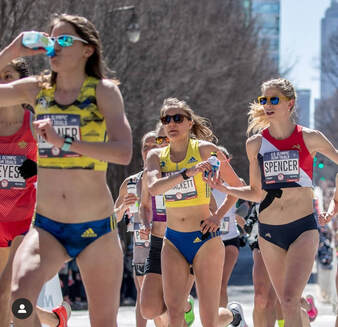 Taking in some fluid while running, especially during tempos and long runs, can make a big difference in both how you feel and how fast you are able to run. Carrying fluid may initially seem irritating, but Nathan makes some great handheld water bottles. I swear, I forget that I'm holding it most of the time. I usually carry water when I'm running, so I have the option to pour some on my head, but an electrolyte solution is also appropriate. During these runs, I am focusing on hydration, rather than fueling. If you are racing or practicing fueling for race day, you should drink something with both electrolytes and simple sugars and aim to get in 100-200 calories every 30-45 minutes. If you are just trying to feel better during a hot run, you can worry about refueling when you are finished. 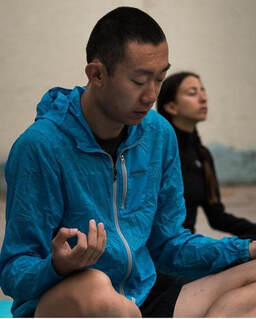 There are many ways to improve running performance besides simply going out for a run. Mental practice can be just as important as physical practice when it comes to getting through tough workouts, racing strong, and managing nerves. There are various approaches to practicing mentality for sport, but I find mindfulness meditation to be especially effective. This post will explain the effects meditation has on the brain and how it may benefit your running performance. Bear with me, at first this post may not seem directly related to running, but they will get there! I want to go through how to meditate and the science behind it before moving on to sports performance. How do I meditate? The goal of meditation is to practice actively thinking about nothing except what is going on in the present moment. There are two main techniques that are commonly used when meditating- Awareness of Breath (AOB) and Noting. AOB is the focus on your breath or a particular body sensation to keep you in the present moment. When you notice your mind drifting, simply note this as a thought or feeling and refocus on your breath (this is noting!). At first one may have difficulty preventing their thoughts from wandering for even a couple of seconds. This is normal and why you practice! You can complete mindfulness meditation exercises on your own, but I find using guided meditation apps to be very helpful, especially if the practice is new for you. The @headspace app (pictured here) is my favorite. They have guided meditation series for everything including sleep, managing stress, loneliness, athletic performance, mindful eating, productivity, and strengthening relationships. You can complete a 2-week free trial to see what you think! How does my brain change during meditation?During meditation, one practices focusing on the present moment and gently pushing away thoughts about the past or future. The brain doesn't know the difference between what we think and what we experience. So if one imagines something related to the past or the future, on some level they will experience that event and all emotions it provokes. With consistent meditative practice, one can reduce the activation of the Default Mode Network (DMN), a circuit of brain regions that is primarily active during passive mind-wandering. This picture is an fMRI scan of such regions. Hyper-connectivity of neurons in the DMN has been linked to anxiety, depression, chronic pain, and PTSD. Studies have shown structural changes to and deactivation of the DMN after consistent meditation. Such deactivation of the DMN may be beneficial to sports performance which will be described tomorrow. How can meditating benefit my running?1. Running in the present momentWhen one practices meditation, they practice deactivating their Default Mode Network by focusing on thoughts relevant only to the present moment. How many times during a hard workout have you had the thought, "How will I possibly be able to hold this pace and feel this strain for X more miles?" or "If I feel this way now, I will feel so much worse in X miles." ? Whenever thoughts about not being able to finish cross my mind, I rely on my meditative practice. Instead of concerning myself with the future, I think, "Am I okay in this present moment?" Most often I am. I refocus my mind on my breath and avoid thoughts about how I may feel later in the race. These thoughts are typically inaccurate anyways. The more you practice meditating outside of running, the easier these brain circuits can be implemented during strenuous exercise. 2. Reducing nerves While some amounts of nervous energy can be beneficial, experiencing too much pre-race/ workout anxiety can compromise performance. There are two parts of the autonomic nervous system - the parasympathetic, which calms you down, and the sympathetic, which revs you up. When you feel stressed or nervous, the sympathetic system kicks in, flooding your body with stress hormones that increase your heart rate and respiration. One of the most powerful ways to deactivate the sympathetic response and calm down before a big race is awareness of breath, since breathing is controlled by the autonomic nervous system. By keeping your focus entirely on your breath, you'll be able to reduce the amount of stress hormones that enter into your bloodstream and calm pre-race/ workout anxiety. Then, you can smile on the start line, like me and my college teammates back in 2012. Again, the more you practice mediation/awareness of breath away from race day, the easier it will be to implement at more crucial moments. 3. Avoiding negative thoughtsWhen meditating, one practices the skill of Noting, which is when one notes then gently pushes away negative thoughts. Sometimes these thoughts are anxieties about the future or worries about how we have acted in the past. Other times they are doubts about ourselves. When racing it is not unusual to question your abilities. No one is immune to occasionally thinking "I'm not good enough", "I'm not capable", and "I didn't prepare enough". If you have practiced noting negative thoughts, gently pushing them away, and refocusing on the breath, this untrue frame-of-mind will quickly disappear and not affect your performance. Again, the more you practice outside of running, the easier it will be when running hard. 4. Kinesthetic Imagery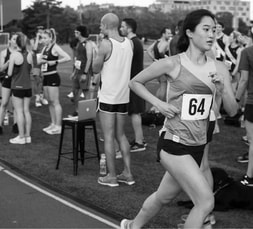 Previously, we discussed how activation of the Default Mode Network of the brain is detrimental for sports performance and how meditation can reduce such activation. I wanted to make sure that it was clear that there are some situations where activation of this area of the brain can help performance. If one imagines something related to the past or future, on some level they will experience that event and all emotions it provokes through DMN activation. If those thoughts about the future are productive, such as imagining yourself achieving your goal, you are mentally rehearsing a positive scenario. This makes it easier to implement in real life. This is called kinesthetic imagery, which is a fancy term for mentally practicing physical skills. It's used when golfers practice their swing in their mind or runners practice reacting to moves made during competition. Kinesthetic energy is not part of mindfulness meditation, but is similar in regards to having control over what you are thinking/feeling and using that control to your advantage during competition. 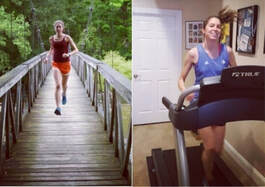 It may have reached 60 degrees in Boston yesterday, but with January and February approaching, there's guaranteed to be some icy and snowy days in most of the US. The most common question I get this time of year is- "Is running on the treadmill the same as running outside and is it okay if I do some of my runs on the treadmill?" Keep reading to find out about the physiological differences between treadmill running and outdoor running, some tips on how to use the treadmill properly, and some advice on how to avoid it (if you want to!). Is there a physiological difference between running on the treadmill and running outside?Even though these are both forms of the same activity, there actually are some physiological differences! When the treadmill's belt moves below you, it pulls the foot that is in contact with the ground behind you. When striding, this puts more strain on the quads and takes some strain away from the hamstrings in comparison to an outdoor stride. Therefore, quad-dominant runners may find treadmill running easier than hamstring-dominant runners. (Side note: Treadmill running may help one recover from a hamstring injury because it takes some of the stress off that muscle.) Does this physiological difference affect training? It isn't obvious, but keep in mind that races are run outdoors. If you are solely running on the treadmill, you may want to consider getting outside sometimes. If weather conditions are not ideal, should I run on the treadmill to ensure that I hit my goal workout paces?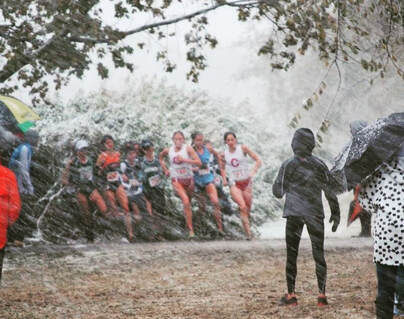 Me and Cornell teammate, Genna Hartung, racing in surprise snowy conditions at the Ivy League XC Championships in Oct 2011 Me and Cornell teammate, Genna Hartung, racing in surprise snowy conditions at the Ivy League XC Championships in Oct 2011 Running in poor weather makes you more prepared for poor weather racing conditions (think Des Linden winning the 2018 Boston Marathon). There is a lot to gain from pushing through a workout in the windy rain, even if it means that the splits are slower than what they would have been on a clear day. When I lived in Michigan, my coaches had a us do an experiment where we ran a tempo on a snowy day in Michigan and then hopped on a plane and did the same tempo in ideal temps in Florida. After shedding layers and getting out of the wind, I was 30 seconds per mile faster in Florida. Yes, the paces were slower in the tough conditions, but I was still getting the necessary fitness in. For long road races, running in harsh conditions often translates to fast times in ideal conditions, but the opposite is not always true. Therefore, I like to look at the challenging weather days as opportunities to make me stronger, rather than getting frustrated. The exception to this rule is dangerous conditions. If you feel unsafe, you should stick to the treadmill. My best advice? Mix it up. For speed workouts where you want to prioritize fast turnover, hit the treadmill. For tempos, practice running in tough conditions and worry less about exact splits. How can I run in slippery and snowy conditions if I don't have access to a treadmill?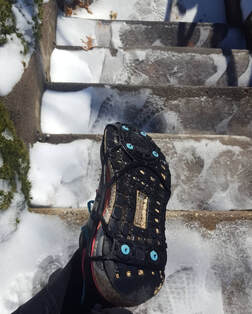 Due North running cleats Due North running cleats Traction spikes make a huge difference when running on the snow. I was skeptical at first. I thought the spikes would feel heavy, clank on the ground where there wasn't snow, or simply fall off. I was having difficulty keeping up with my running friends who were wearing them, so I eventually gave in and it was a game changer. Personally, my favorite brand is Due North. The cleats come in a few different sizes and the spikes are small, so I am also able to run where there is no snow on the ground with limited irritability. They are great if you want to go out for a run and enjoy the snow without getting frustrated! How do you properly run on the treadmill?Many runners are subconsciously nervous about falling off the back of the treadmill. Therefore, they run close to the front of the belt. While this may seem safer, it will cause the runner to shorten their stride. Such alterations in running form could lead to injury or make running on the treadmill unnecessarily difficult. Aim to let yourself run in the middle of the treadmill, which may feel like the back. In addition, when logging miles on the treadmill, you may want to consider setting the incline to 0.5% to account for the air resistance that you would encounter running outside. My GPS watch and the treadmill display do not match. Which should I trust?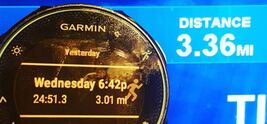 Unfortunately, GPS watches, even on their indoor mode, aren't very accurate on the treadmill. I always go by the treadmill display for both the pace and distance. While is possible that a treadmill may not be calibrated correctly, I find the watch is usually less accurate. Remember, don't be too much of a perfectionist with pace when running on the treadmill. As long as you feel like you got in the proper effort, then you accomplished the goal of the day. An interesting treadmill study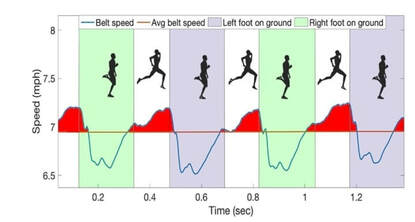 According to a study done by @strydrunning (using their foot pod power sensor), the treadmill's belt speed is not constant. "When your foot strikes the belt, the motor is loaded in the belt slows temporarily. Conversely, when your body is in the air, the motor applies an extra speed to the belt to recover from the previous loading." What does this mean for you as a runner? If your treadmill is properly calibrated, about 2% of the distance the belt travels during your run is "free distance" that is recorded by the treadmill but does not have any metabolic cost to you. The figure above, taken from the Stryd Blog article, displays belt speed over the time of a runner's stride. Does this mean running on the treadmill is easier than running outside? Possibly, but it depends on how your treadmill is calibrated and whether you run with a normal stride when you are on it. |
Archives
November 2020
Categories |

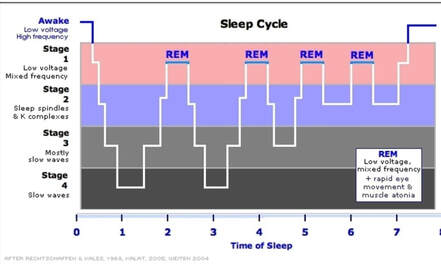
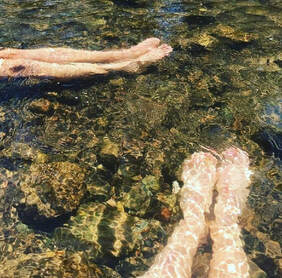
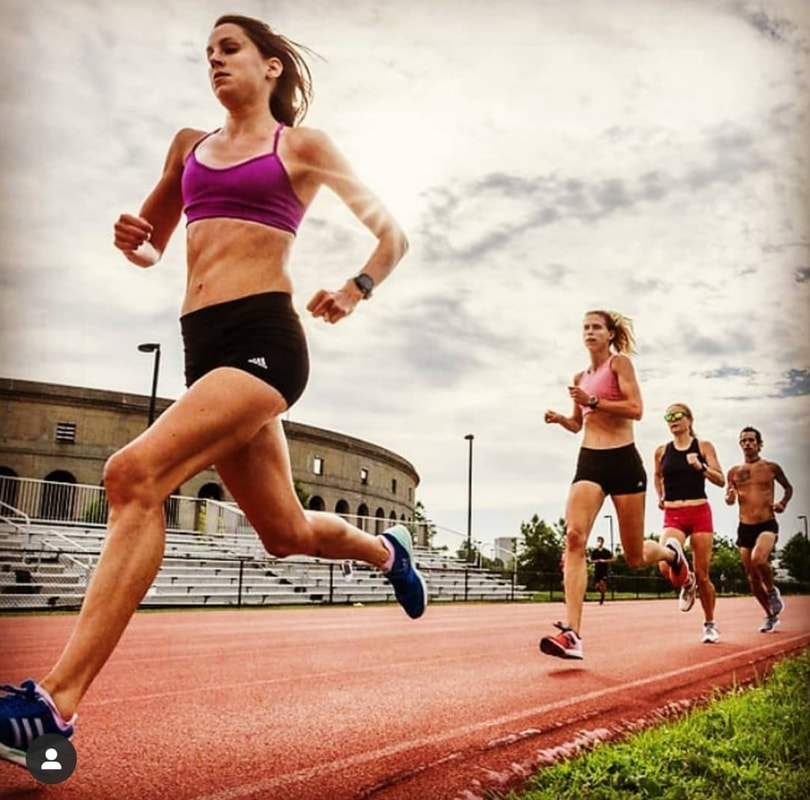
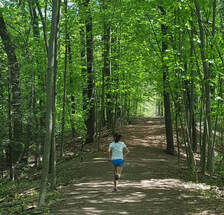
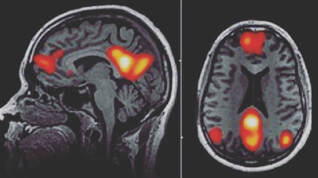
 RSS Feed
RSS Feed